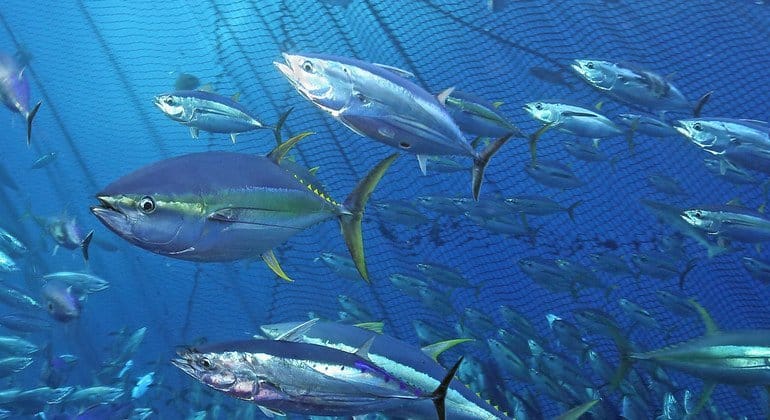Here’s the translated text in American English:
This May 2nd, World Tuna Day is celebrated, an event established by the UN General Assembly nine years ago to highlight the importance of tuna in human nutrition and the promotion of sustainable fishing practices. This fish, known for its exquisite canned products, is a rich source of protein, minerals, omega-3 fatty acids, and vitamin B12, making it a healthy option for many consumers.
However, tuna faces serious threats such as overfishing and predatory catching methods, driven by a growing demand that puts this species at risk. In 2017, 75% of tuna catches came from populations not affected by overfishing; today, that percentage has risen to over 90%, suggesting progress in the management of their populations. Particularly noteworthy is the case of Atlantic bluefin tuna, which, after being on the brink of extinction in certain areas, has begun to recover in southern England and Ireland, thanks to coordinated efforts by governments in various regions.
The Food and Agriculture Organization of the United Nations (FAO) leads the Common Oceans program, which aims to ensure the sustainability of tuna populations through the implementation of regulations and guidelines that consider the recommendations of fishermen, scientists, and fishery managers. This program aims to maintain all major tuna populations at sustainable levels by 2027.
Despite the progress made, monitoring and regulation remain crucial aspects of this work. The High Seas Treaty is a testament to international efforts to protect marine biodiversity against challenges such as climate change, which not only affects tuna reproduction but also pushes them to move toward deeper waters, increasing fishing costs and threatening the livelihoods of vulnerable coastal communities.
Additionally, it is essential to emphasize the protection of other marine species, such as birds, that often get caught in fishermen’s nets and hooks. Promoting sustainable fishing practices becomes imperative to address these challenges.
Tuna catches are concentrated in the Pacific Ocean, which accounts for two-thirds of total production, while 23% comes from the Indian Ocean and only 11% from the Atlantic. As warm-blooded predators, tuna are capable of swimming at speeds of up to 43 kilometers per hour and are known for their extensive migrations, traveling thousands of miles across the oceans. Proper management of these fisheries is not only vital for the species’ continuity but also crucial for global food security and the health of the marine environment.
Referrer: MiMub in Spanish











